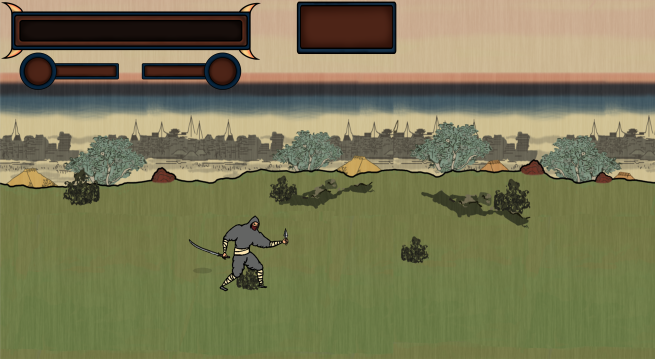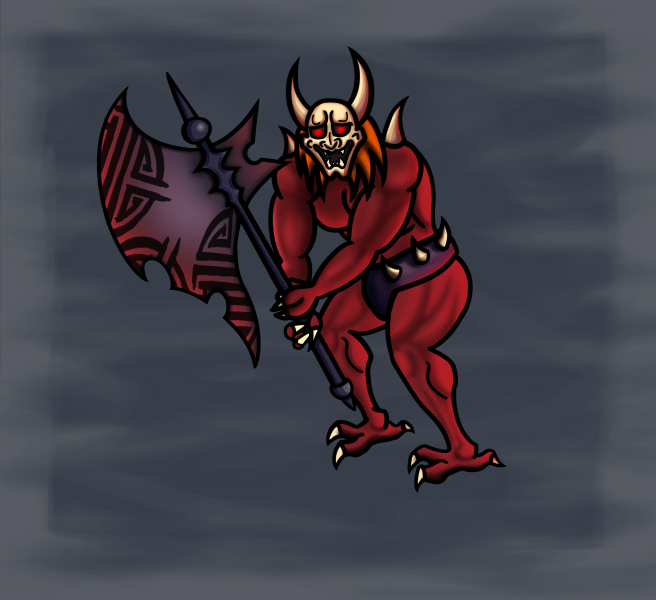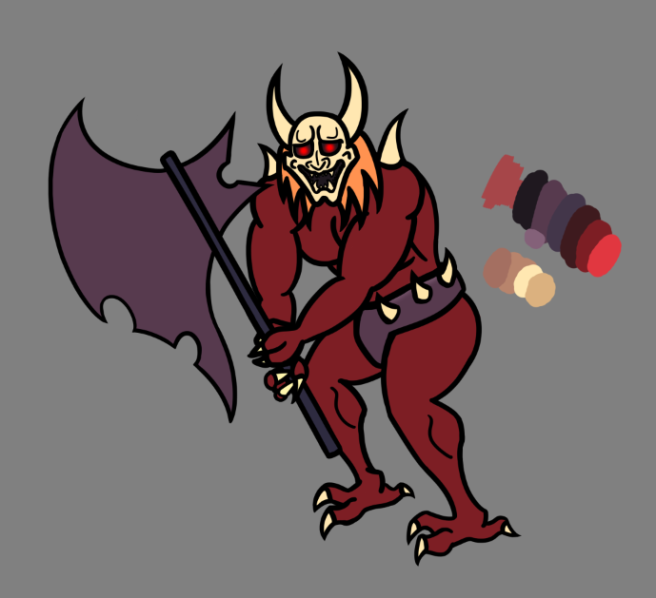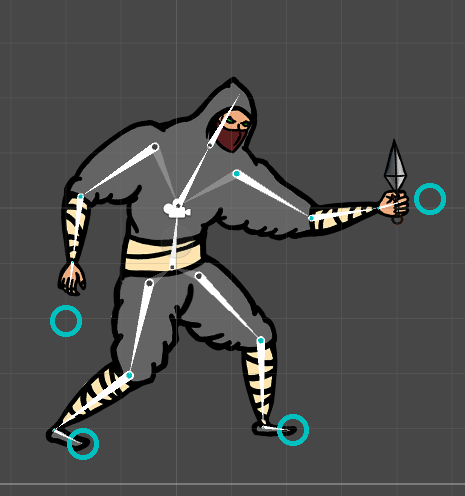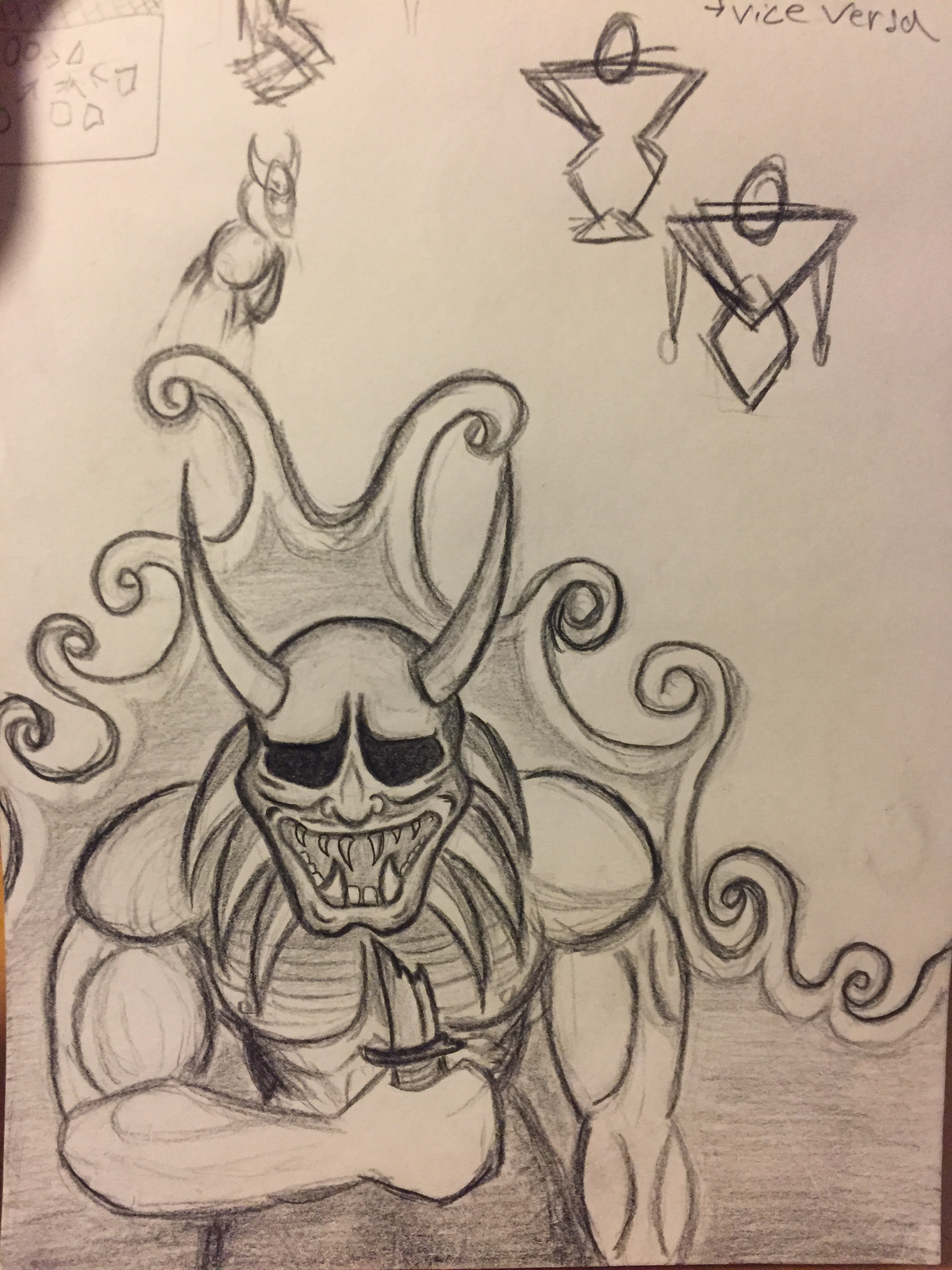This week we had an assignment on designing GUI in our graphics course. The assignment could be conveniently integrated with our game design project. I shared the assignment with our teams other graphic artist Alexander Linde. My work focused on the heads-up display. Generally I knew that my time was already stretched thin this week since there was still other work left for the game. This was for example animating the demon which would also require some time afterwards to implement.
I planned first to make a health bar, a frame for a power-up icon and -timer and a frame for the score counter. I did not at first have a clear view about all the needed assets, but we had a meeting coming on the next day so I knew we could unify and clear our views on the HUD.
I started by sketching out a mock-up of the basic layout of the HUD on a piece of paper. Then I proceeded to create a digital mock-up which explained the function of the assets better.
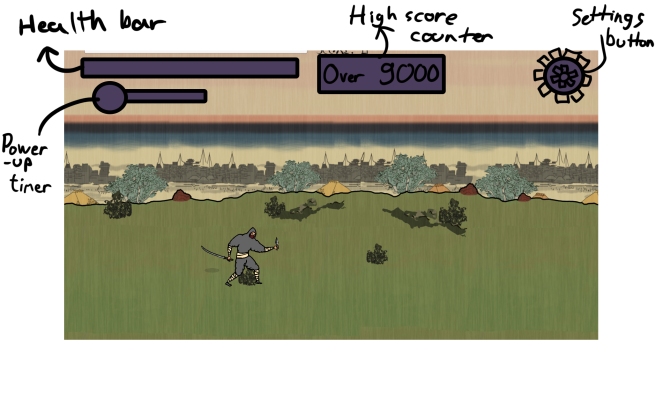
The health bar is the most detailed asset on the HUD. I thought that it should have some character and fit the game’s aesthetic to give the HUD some juice. I chose a classic rectangular shape for it since our health pool in-game was already of that shape, and it would make the implementation faster. I cut making a custom health pool out and trust the coders to fill it with green for the health pool, since time is of the essence. Once again the horns were a simple tasty thing to add complexity to it. After an initial try with one horn I decided to add them on every corner.
I chose blue and brown for the colours on the frame after experimenting with some other colours on a picture of the gameplay. Brown fit well into the game’s nature rich atmosphere, but the deep blue was a riskier choice. There was still something so calm and comfortable in the combination of brown and blue. I couldn’t find a better combination and it sit comfortably on the screenshot of the gameplay.
Down below a picture of the health bar and under it a composition of the assets in the game’s environment.
Until next week!

